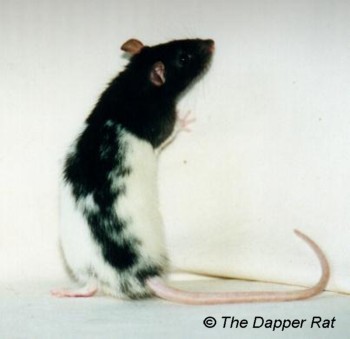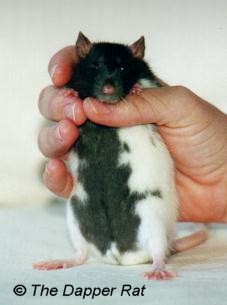Figure 1: Seizures in 9-month-old male rat (Motely).
Case history and photos
History
Motely is a 9-month-old black hooded, downunder male rat, in otherwise healthy condition that presented with seizures.
Clinical Signs
The clinical signs were similar to the typical epileptic-like grand mal seizure (also typed as generalized tonic-clonic seizures) e.g., head thrown back, arched body, rhythmic spasms, arms pawing the air, clenched teeth, etc. These would last about 30 seconds or so, the spasms becoming stronger and stronger by the end, and then he’d slump dazed for awhile. Afterward he’d wake and be instantly alert and completely unaware he’d had the episode. These would usually occur in batches, a seizure every 30 minutes to 2 hours, lasting for half a day or so. Then he’d be fine for a few weeks before the next bout.
We consulted our vet after the first seizure.
Diagnosis
Seizures associated with hyper-dominance behavior (e.g., extreme agitation, running frantically about the cage, gnawing and grasping on things, rubbing himself on objects, fluffed up fur, etc.).
Treatment
Motely was initially dosed with anti-inflammatory steroids and a course of antibiotics to rule out the possibility of injury or infection, but the seizures continued.
So frantic was Motely that we had to place him in an isolation box so he wouldn’t hurt himself or his cagemates. We had sedative injectable on hand to give him when this happened, if needed.
We suspected there was a brain chemistry-hormonal issue, as his seizures started at adolescence and always occurred with hyper-dominance / aggressive behavior. He was given a chemical castration drug called Tardak (generic name delmadinone by Pfizer), dose based on 0.1 mL / 500 gm rat repeated in 10 days, to lower his hormones, as a test.
Outcome
The Tardak helped to reduce seizures for about 6 months, but we found that we had to keep giving increasing doses or give him the injection more often.
[Note: we are not sure whether he was helped by the reduced hormones or the side effects of Tardak – as it has a calming side effect which has been used to control some seizures in dogs]
Later as the effects of the Tardak were reduced, we opted to try a behavioral modification drug called Clomicalm1, to reduce the agitation which seemed to occur before the seizures. Mote was initially given 0.5mg twice daily, and then tried at a higher dose a few weeks later at 1mg twice daily. Dosing for Mote was based on a weight of about 450-475g. The dose for Mote was provided from the 5 mg tablets of Clomicalm1, which was crushed up and added to food.
This seemed to help a some.
Follow-up
A few weeks after starting the Clomicalm1, Motely died unexpectedly at age 18 months. From the position we found his body in, we suspect he died during a seizure.
Of note, Mote was never a very large rat. Downunders were quite small rats to start with. Mote was always quite a fidgety rat, always bustling about and wired like he was on caffeine.
The following are Motely’s weights at specific ages:
- At 9 months when seizures started – 440g.
- Maximum weight at 13 months – 510g.
- At 18 months when he died – 475g.
Photos
While the following photos do not show active seizures, they have been included to show Motely’s size, type, and markings.
 Photo 1: Shows Motely’s downunder markings. |
 Photo 2: Shows more of Motely’s markings. |
Photo courtesy of Al and Robyn Arthur, of The Dapper Rat, http://www.dapper.com.au
Collaborated case history by, Dr Larissa Ladyko B.V.Sc, and Robyn Arthur.
Reference
- Clomicalm Product Info. (2008, November 7). Retrieved January 1, 2009, from http://www.clomicalm.novartis.us/pdf/Clomicalm-product-info.pdf.


